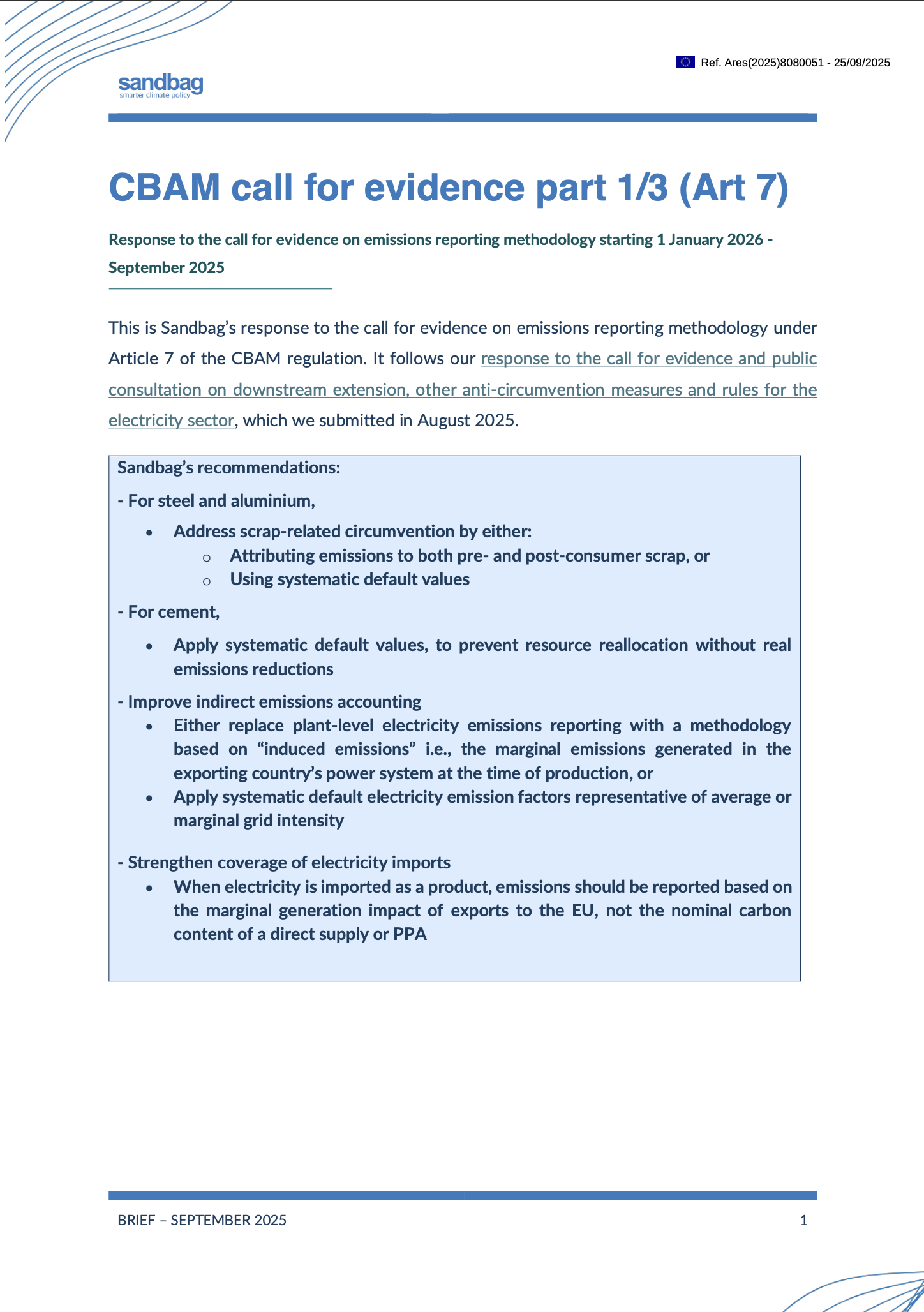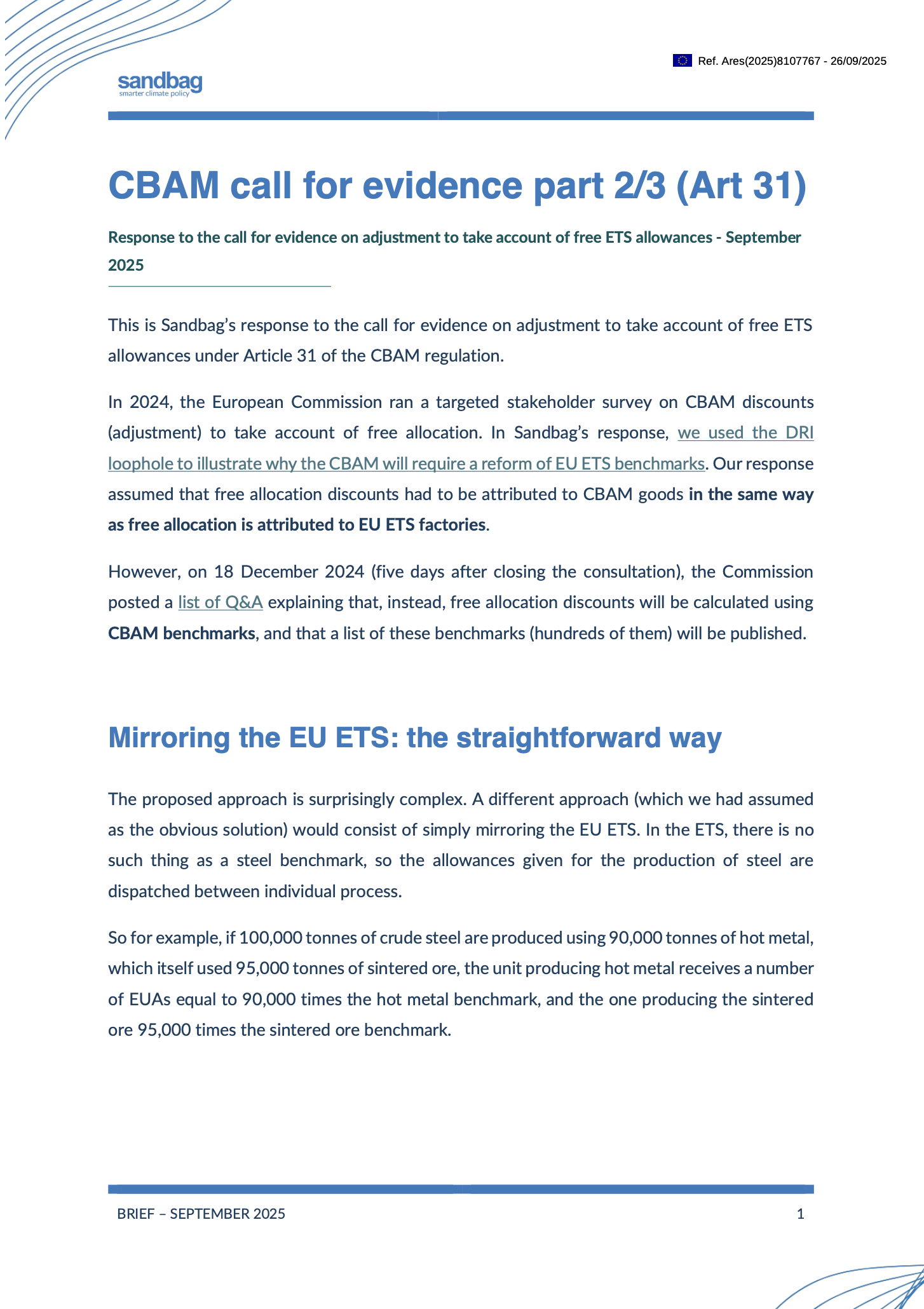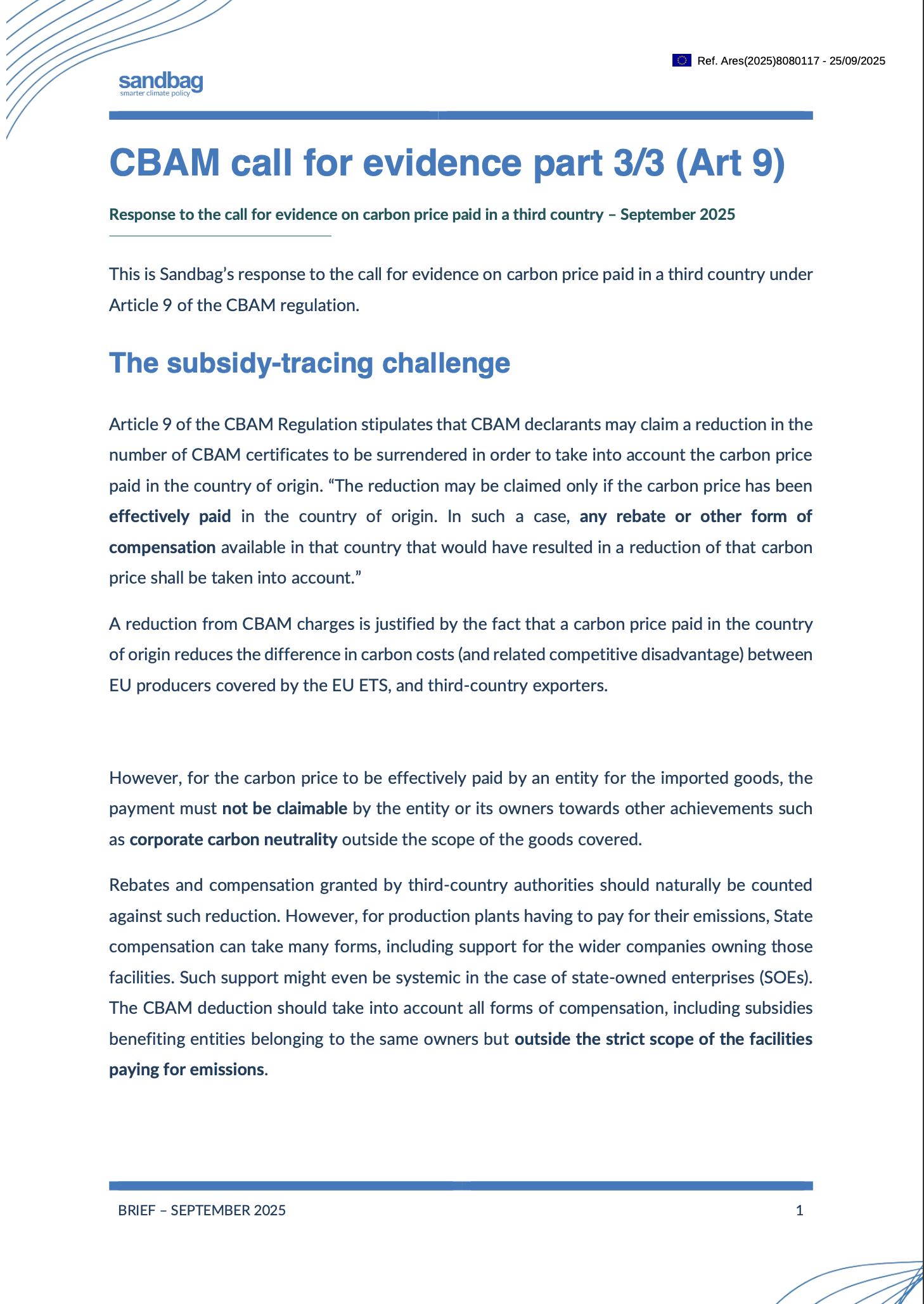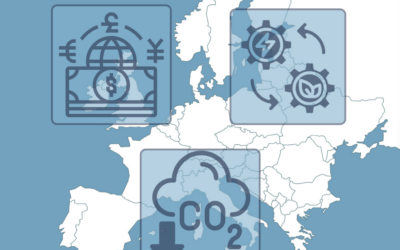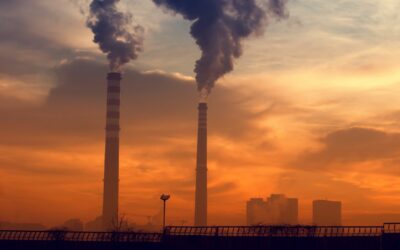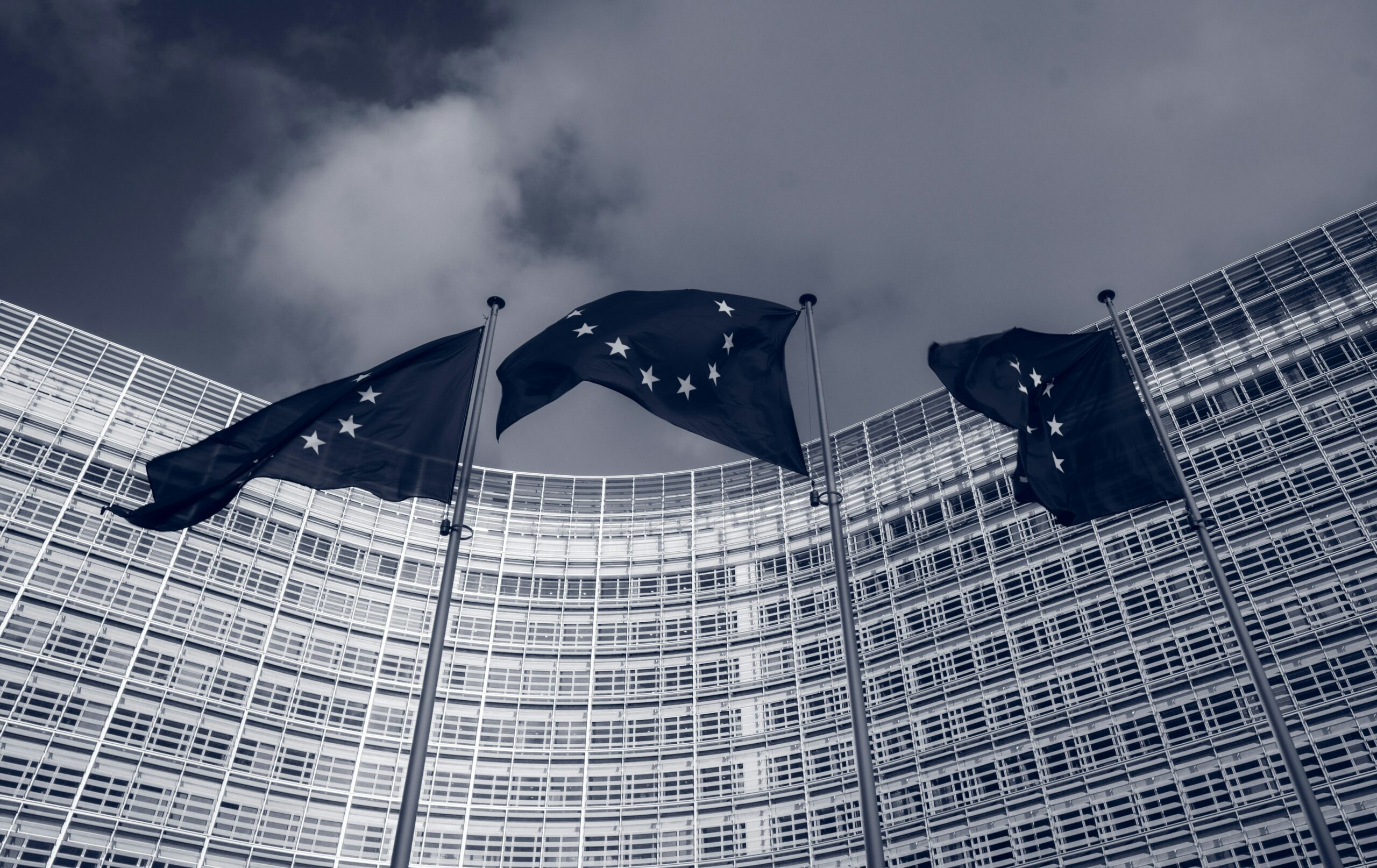The EU’s Carbon Border Adjustment Mechanism (CBAM) aims to ensure that imported goods face the same carbon costs as those produced in Europe.
As CBAM enters its next phase, the European Commission asked for input on three areas:
- Article 7 – Emissions reporting
- Article 31 – Adjustment to take account of free allocation
- Article 9 – Carbon prices paid in third countries
Sandbag responded to each consultation, highlighting risks that could weaken CBAM’s impact and offering practical solutions.
Our main recommendations
- Article 7 (Emissions reporting): Avoid resource shuffling by using induced emissions and systematic default values for steel, aluminium, cement, and electricity imports.
- Article 31 (adjustment for Free allocation): Move to product-based free allocation, ensuring equal treatment between EU and imported goods.
- Article 9 (Carbon price paid abroad): Ensure deductions only apply where carbon prices are paid for the production of goods, taking into account all support received by the production plant even not for carbon.
Related publications
Extending the CBAM to indirect emissions
Sandbag’s latest brief outlines why the CBAM must include indirect emissions — and how this would improve climate effectiveness, industrial fairness, and fiscal efficiency.
CBAM extension: Closing the emissions gap
Sandbag’s new position paper urges the European Commission to expand the CBAM horizontally and vertically, addressing loopholes and supporting the phase-out of free allocation.
For a systematic use of default values in the CBAM
The current carbon emissions reporting in the CBAM fails to achieve its goal of replacing free allocations under the EU ETS and undermines its integrity. A systematic default value system would improve the CBAM and safeguard the EU ETS.

